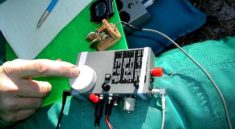Chhatrapati Shivaji Maharaj International Airport (CSMIA) has been equipped with latest technology to handle its flight operation. Being one the busiest airports in the country as well as in the region, CSMIA need new technology to run its function properly and smoothly. At CSMIA, travellers engage with technology from the moment they arrive at the airport until they depart, or the other way around. Examples of these interactions include creating luggage tags and self-boarding passes, checking flight information on the screen, and checking in.
Using the Data Assets of the Aviation Sector:
The primary goals of the aviation sector are effective planning and proactive disruption control to guarantee a smooth passenger experience. AI and data science are now essential for completing that task.
Without a question, data science course offers a competitive edge to a sector that is frantically looking for fresh approaches to boost productivity in the aftermath of the epidemic. Data science should be seen as an investment rather than a cost.
Performance on Time and Disruption Avoidance:
In order to forecast On-Time Performance (OTP), such as flight departure/delay, arrival, and passenger count at the airport, airports have also used AI and machine learning. They should be able to anticipate trends and handle interruptions when they occur with more ease thanks to the solution. Improved passenger happiness, lower carbon emissions, and hundreds of millions of dollars in industry savings are all possible with an optimised turnaround process (OTP).
OTP is just one instance of how data may be used to unleash profits, efficiency, and smooth passenger experiences. Another place is the cabin, where there is often a delay since there is not enough room for carry-on luggage. Prior to the quick and automated determination of the amount of available space on the aeroplane, bag metering employ deep learning models to automatically recognise a bag’s precise height, breadth, and depth.
Overhead Cabin Space:
Based on the size of the baggage that have previously been checked in, airlines are able to estimate when overhead cabin space may become a problem and alert the gate attendant in real time. We want to test these technologies with many Latin American airline clients.
With the goal of optimising airport capacity planning under real-time operations, airports have defined their use cases. This will help the airports gain a better understanding of its current airfield performance and conduct an analysis that will ultimately improve its seasonal planning of operational resources. In addition to aviation-related open data sources, historical data from airport stakeholders and recognised aviation organisation sources was used for the runway, aprons, gates, and aircraft stands.
Airport’s Infrastructure:
From the standpoint of seasonal planning, the airport’s infrastructure (stands, gates, and scheduled aircraft arrivals) can typically accommodate the demand of users; however, in terms of pre-tactical and tactical planning during peak hours, any disruption to the flight schedule (due to weather or late arrivals) could have a major effect on on-time performance.
CSMIA Applications:
As a technologically advanced airport, CSMIA makes use of the worldwide ticketing passenger management system to provide easy access and departure for travellers. Additionally, the airport eliminated “boarding pass stamping” for all domestic flights using Terminal 2 by using a paperless boarding card system. This was the first technology offering for an Indian airport.
Smartphone Application:
Mumbai Titu, a smartphone application designed for easy interior navigation, has also been released by CSMIA. The most recent version of the application highlights the range of goods and services available throughout the terminal, from passenger arrival to departure.
Pre-ordering meals, auto-authenticating Wi-Fi for regular visitors, booking cabs, and m-commerce for duty-free shopping are just a few of the capabilities available on the smartphone application. In addition, the app helps passengers by allowing them to easily find, monitor, and use a variety of airport amenities with just a single click.
Technology in Action:
The consistent and accurate operations of the airport is greatly aided by technology, and CSMIA constantly updates its technological solutions to further enhance daily operations at the airport. On December 8, 2018, the airside underwent a technological upgrade that allowed it to handle 1,004 aircraft on a single runway, breaking the previous record of 1,003 flight movements in a day set in June 2018.
How Officials report Performance Change:
“Air traffic movement at the Chhatrapati Shivaji Maharaj International Airport has increased by 25{5ccd6ba0a555b07dfbba38f374185b8dbc87a0e1913dd62a85794d46978a4f0a} over the last five years of operation, and the Runway Occupancy Time (ROT) has decreased from 65 seconds to 47–49 seconds. CSMIA now serves 112 locations in India and other countries, and it has a high volume of passenger travel all year round. According to a CSMIA official spokeswoman, “The airport maintains a database of the passenger traffic and conducts a detailed analysis, which further helps amplifying the facilities, services, and offerings for passengers travelling from the airport.”
Taking care of Cyber Security:
Modern application development involves the quick deployment, modification, and decommissioning of apps. Since CSMIA is a worldwide organisation, it is equally crucial that it improve, modify, and put into place the greatest security inside its walls. In order to facilitate the hassle-free transit of thousands of passengers, the airport must safeguard the data, systems, and technology used inside its premises. This is because the airport sees high passenger traffic every day.
Improvement of Customer Service:
By incorporating new technology into its systems, CSMIA also takes use of developing technologies to enhance and improve its passenger experience. “The airport is striving to integrate these technologies, whether it be through the advancement of AI, VR, or machine learning under the IoT umbrella, offering services for every facet of the airport,” the representative said.
Attempts at sustainability:
Technology utilisation and sustainability are intimately related. In fact, GVK’s concept places sustainability at the centre of its basic principles. The airport operates using sustainable techniques on a regular basis. The airport uses artificial intelligence in its daily operations. Because of this, CSMIA makes use of cutting-edge technology while also regularly evaluating them. The first airport to do away with luggage tags was CSMIA, which did so in an effort to clear the pre-embarkation security check area. Additionally, it is the first to provide a mobile application for an airport operator, which streamlines the whole travel experience for customers.
Conclusion:
As CSMIA continues to use Data Science for its daily operations, there are more than enough job opportunities for data scientists in Mumbai. By enrolling in Data Science course in Mumbai, you can increase your employment chances and get a head start for your career.
Business name: ExcelR- Data Science, Data Analytics, Business Analytics Course Training Mumbai
Address: 304, 3rd Floor, Pratibha Building. Three Petrol pump, Lal Bahadur Shastri Rd, opposite Manas Tower, Pakhdi, Thane West, Thane, Maharashtra 400602
Phone: 09108238354,
Email: enquiry@excelr.com





